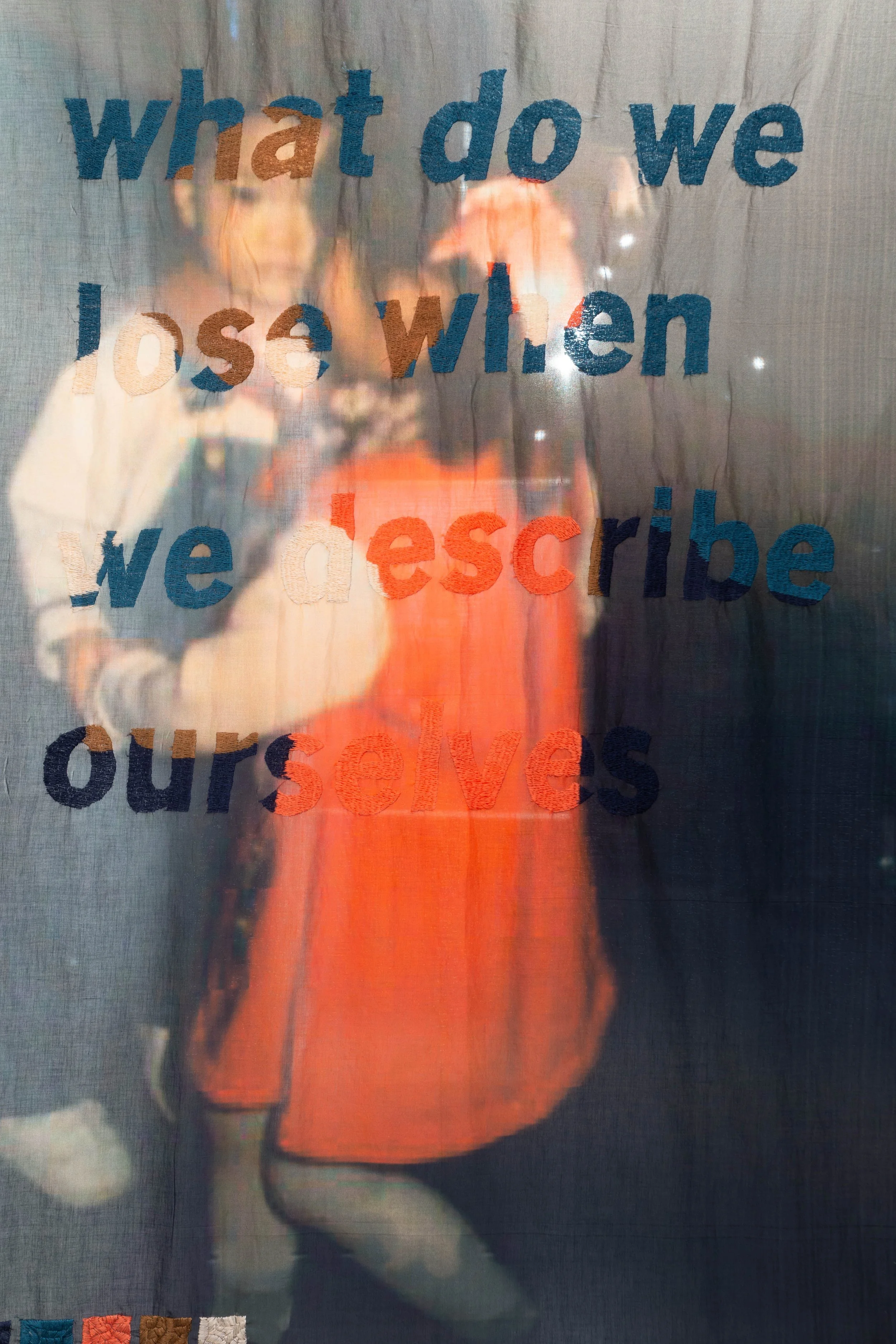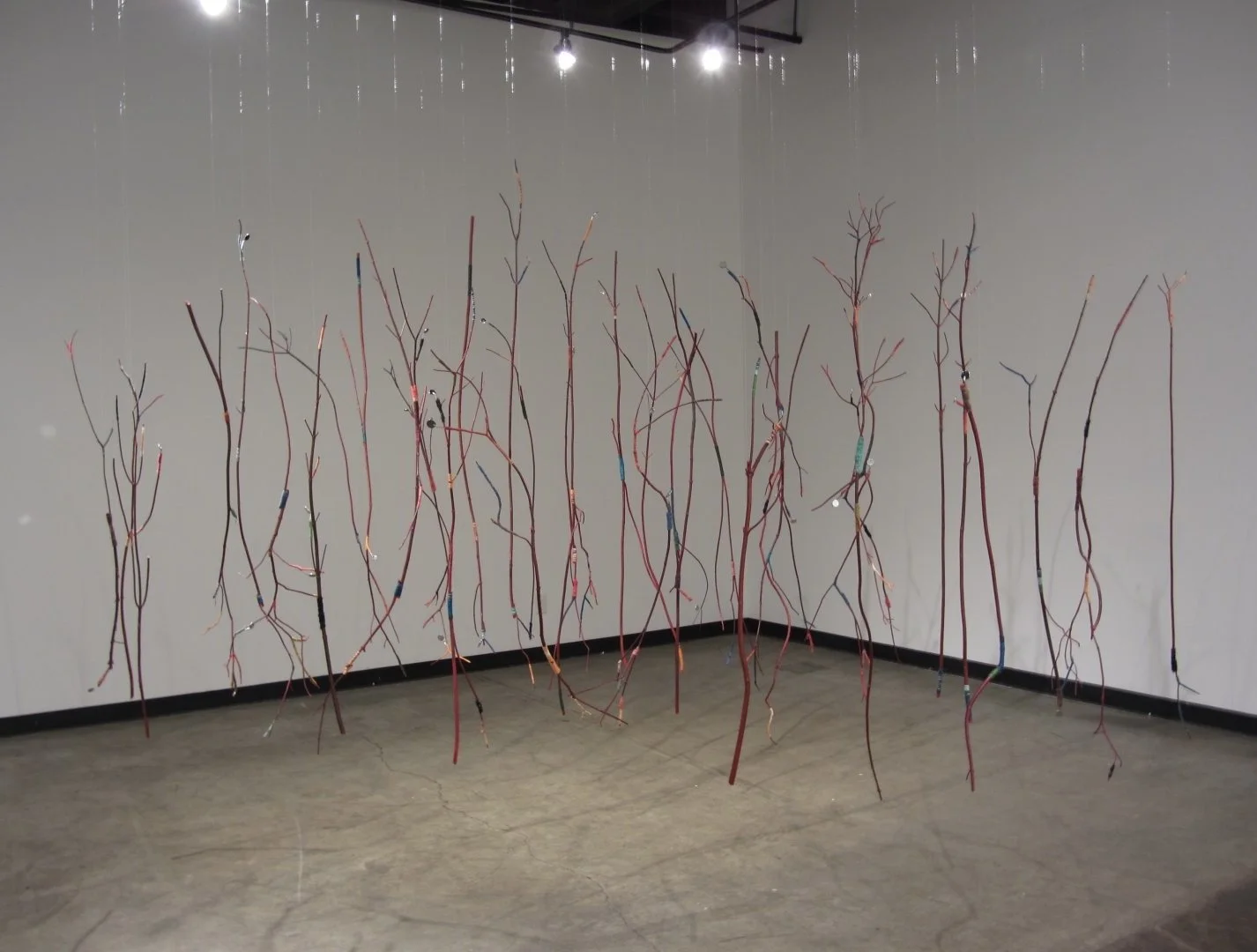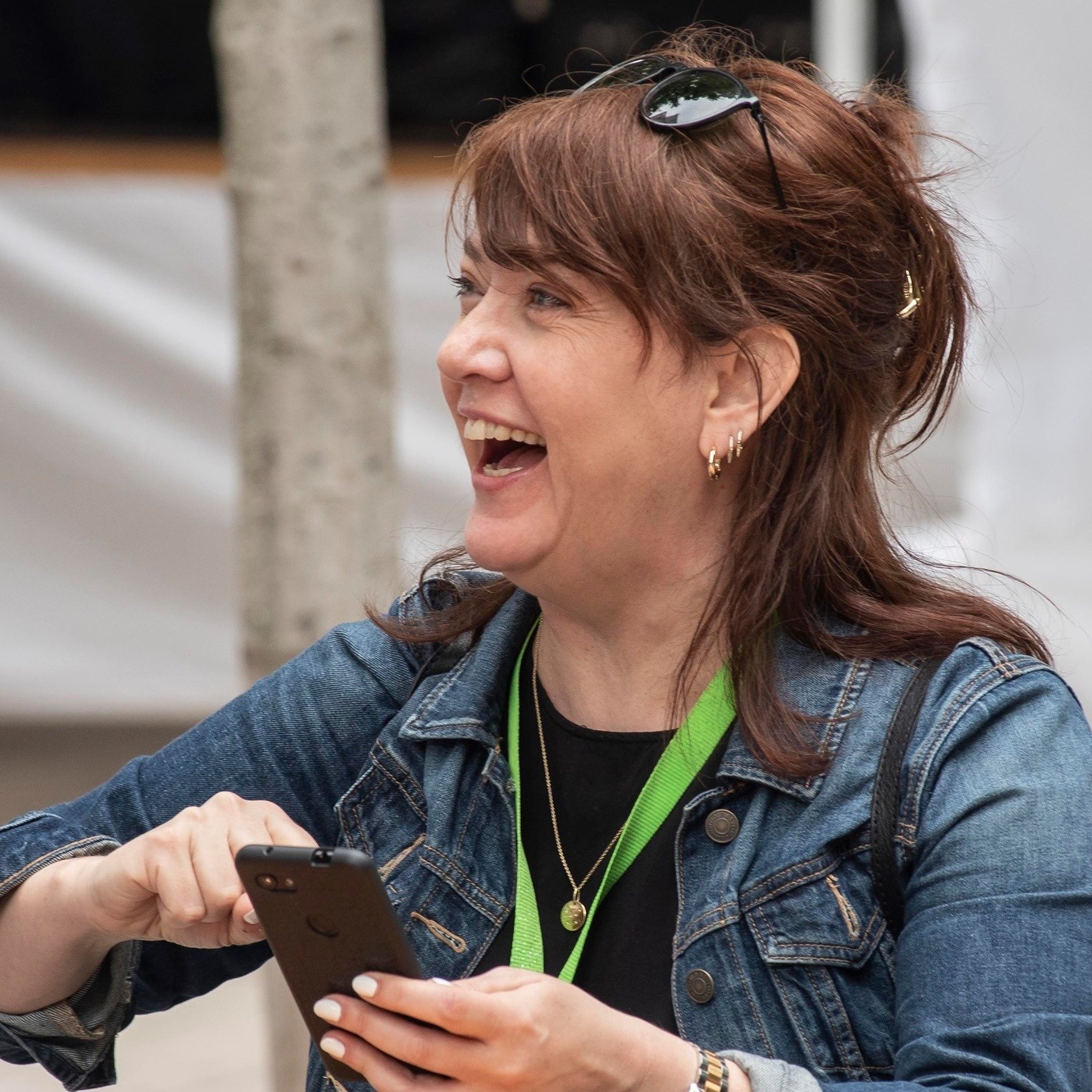Curator Carmen Levy-Milne explores haunting and reclamation at Burnaby Art Gallery's Ghostly Makers
Diasporic craft and textile express absence and repair in the artists’ cultural and familial histories
Lan Florence Yee’s A Legacy of Ethnography (2021); hand embroidery on inkjet print cotton voile. Photo by Alison Postma
Keysha Rivera’s The organ that is responsible for all the other organs (2021); photo transfer on found fabric, soft sculpture. Photo courtesy of Rivera
Ghostly Makers is at the Burnaby Art Gallery to September 24
BURNABY ART GALLERY’s new exhibition Ghostly Makers highlights themes of haunting and ancestral reclamation in diasporic craft and textile practices.
Curated by Carmen Levy-Milne and featuring artists Samar Hejazi, Jacqueline Morrisseau-Addison, Keysha Rivera, Arezu Salamzadeh, and Lan “Florence” Lee, the show explores narratives of absence and repair within the artists’ cultural and familial histories.
Levy-Milne, who is of Ashkenazi Jewish and Irish ancestry, curated Ghostly Makers as part of her masters thesis at UBC. She was first drawn to the theme of cultural mending through the Hebrew philosophy of Tikkun Olam, which translates to ‘the repair of the world’.
“After the Holocaust, Tikkun Olam was used by diaspora communities to ground a set of values for repairing our community after the mass devastation and loss,” Levy-Milne says in a phone interview with Stir. “Our Jewish responsibility is to repair, is to engage in caring and reciprocal relationships, and to have that always as the forefront of what we're contributing to the world.
“My thesis has really been looking at how that idea of repair can be understood as an approach to curating,” she continues. “I did a lot of work thinking about how art practice can be a form of repair, and now I'm thinking about how discourses of care and relationality in curating can also embody these themes.”
The exhibition’s title references the text Ghostly Matters: Haunting and the Sociological Imagination by Avery Gordon. Levy-Milne says that Gordon’s definition of haunting as an animated state of refamiliarization inspired her thesis project.
“I think haunting is an interesting way to think about reconnection and the process of repair, because there's names and faces of people in my family tree that I don't necessarily know, but I feel a deep connection with,” Levy-Milne says. “I find reading about them and the languages they spoke, the places they came from, and the different practices they had is a really haunting experience, but it's also reparative as a diasporic person.”
“I found Gordon's definition and application of haunting uplifting in the way that even though all these things have been done to us, and even though we've experienced so much loss, we're still thriving, or there's still aspects that continue on through storytelling practice,” she adds.
The symbolism of ghosts and haunting unites the five artists from an array of backgrounds in reimagining and returning agency to cultural practices that have been erased under settler-colonialism. Through the use of craft and textile mediums, the artists are able to tangibly express narratives of haunting through the reclamation of cultural artforms, as well as demonstrating loss and the attempt to salvage these generational practices.
“Samar Hejazi uses Palestinian weaving in her work, which is a really interesting way to reconnect with a traditional practice from her background,” Levy-Milne says. “But she's also manipulating it in a way that hasn't been used before to express stories of loss and trying to connect cultural practices in regard to a contemporary setting where there's all these different aspects of diaspora, and also how changes in the way we communicate online impacts these processes.
“Craft and textiles are comforting mediums that I find are compatible with diasporic identity, because they're very mobile and are able to be passed down easily,” she continues. “I was thinking a lot about the family heirlooms that were passed down in my family, and it's often the Judaica; Hanukkah menorahs or the seder plates that my Zeyde painted, as well as the woven works from my Irish family that are still held in our family because they were able to be moved with ease.”
Levy-Milne was drawn to the Burnaby Art Gallery as a historic space that seemed compatible with the themes of Ghostly Makers. The building that houses the gallery was designed in 1909 by British architect R.P.S Twizell, and is regarded as an architectural jewel.
“The Burnaby Art Gallery really stood out to me. It’s a domestic space, which is very different to a lot of the art galleries in Vancouver. So I think the topic of ghosts has a real resonance there,” she says. “Burnaby Art Gallery is one of the only public art institutions in Canada that is a print and paper collecting institution, so they tend to do publications with all of their exhibitions. It was really exciting to get to think through writing as well as curating for this show.”
By engaging with alternative methods of documenting personal histories, Levy-Milne seeks to contribute to uplifting decolonial and critical responses to the legacy of settler-colonialism within the Canadian arts sector.
“I think a lot of artists have already been thinking of the arts as a resonant place where we can enact social change or respond to our circumstances in some way,” Levy-Milne says. “Because of that, I found my personal philosophy of Tikkun Olam to be very compatible with the curatorial approaches in this exhibit.
“I felt that the writing and organization I did for this show to be my contribution, but the art in itself speaks really well to these themes,” she concludes. “I found all of the artists have formed the theme of this show and influenced my thinking around these themes. A big part of this is to not assert my perspective too heavily over the works, but to be a collaborator with the artists.”















